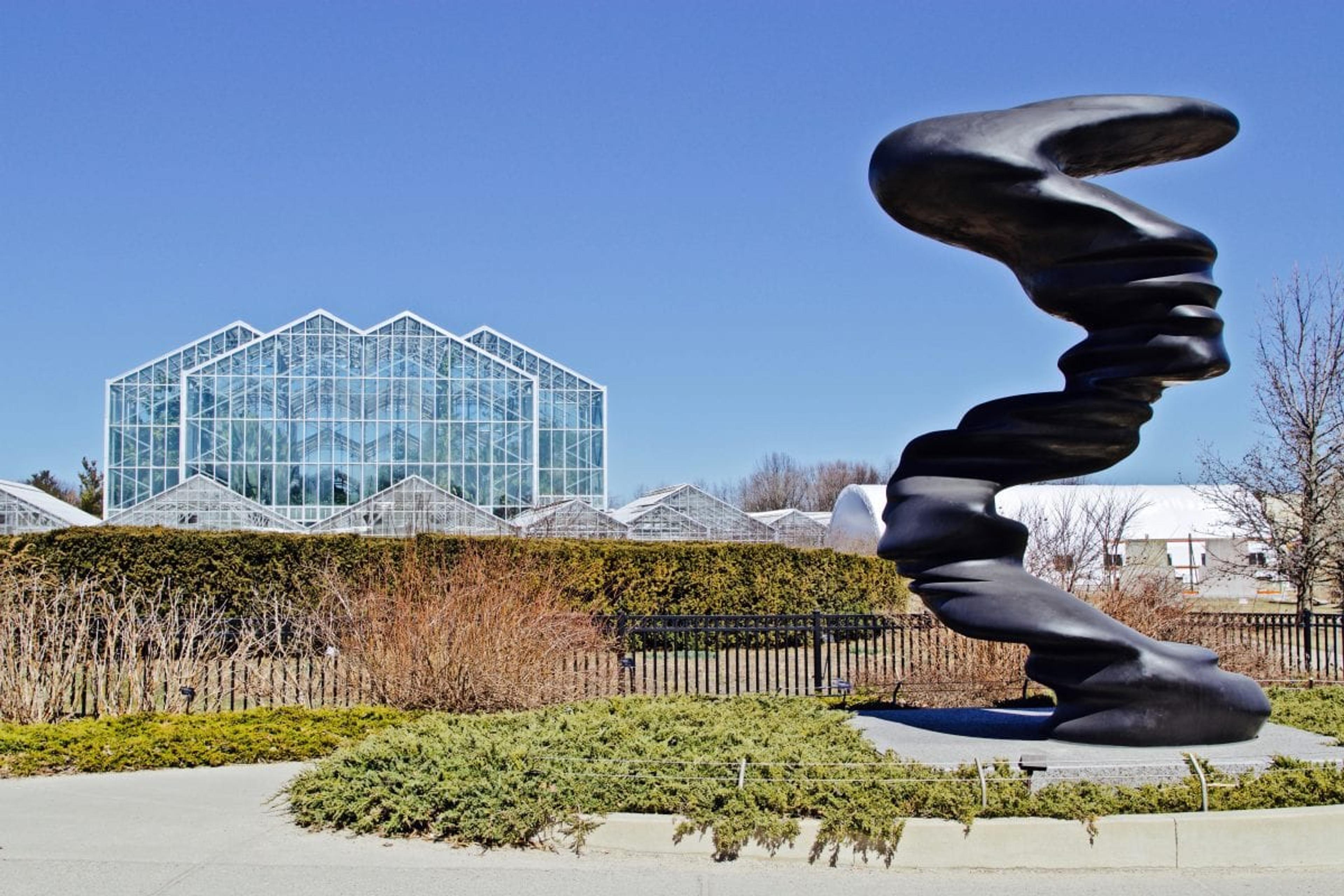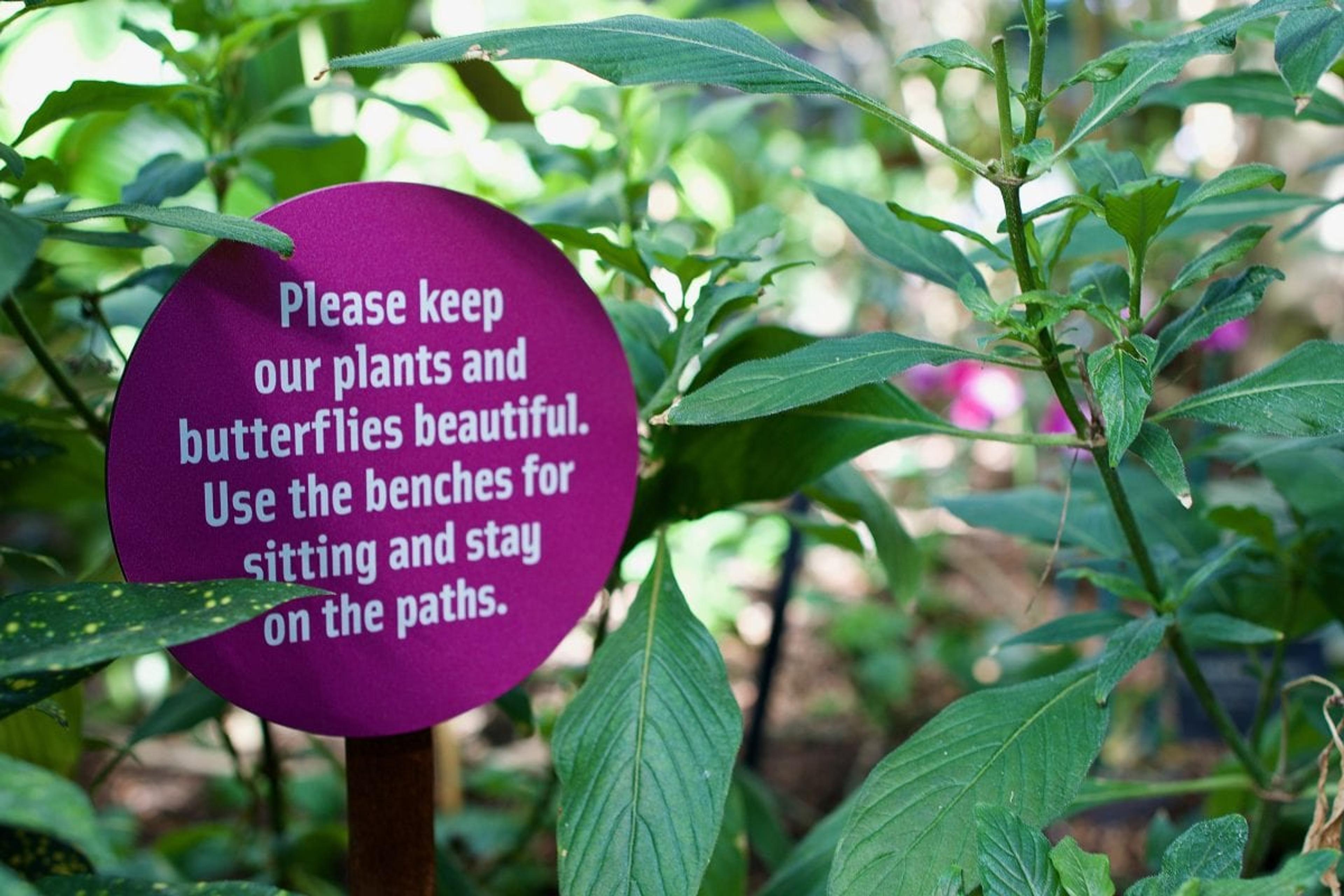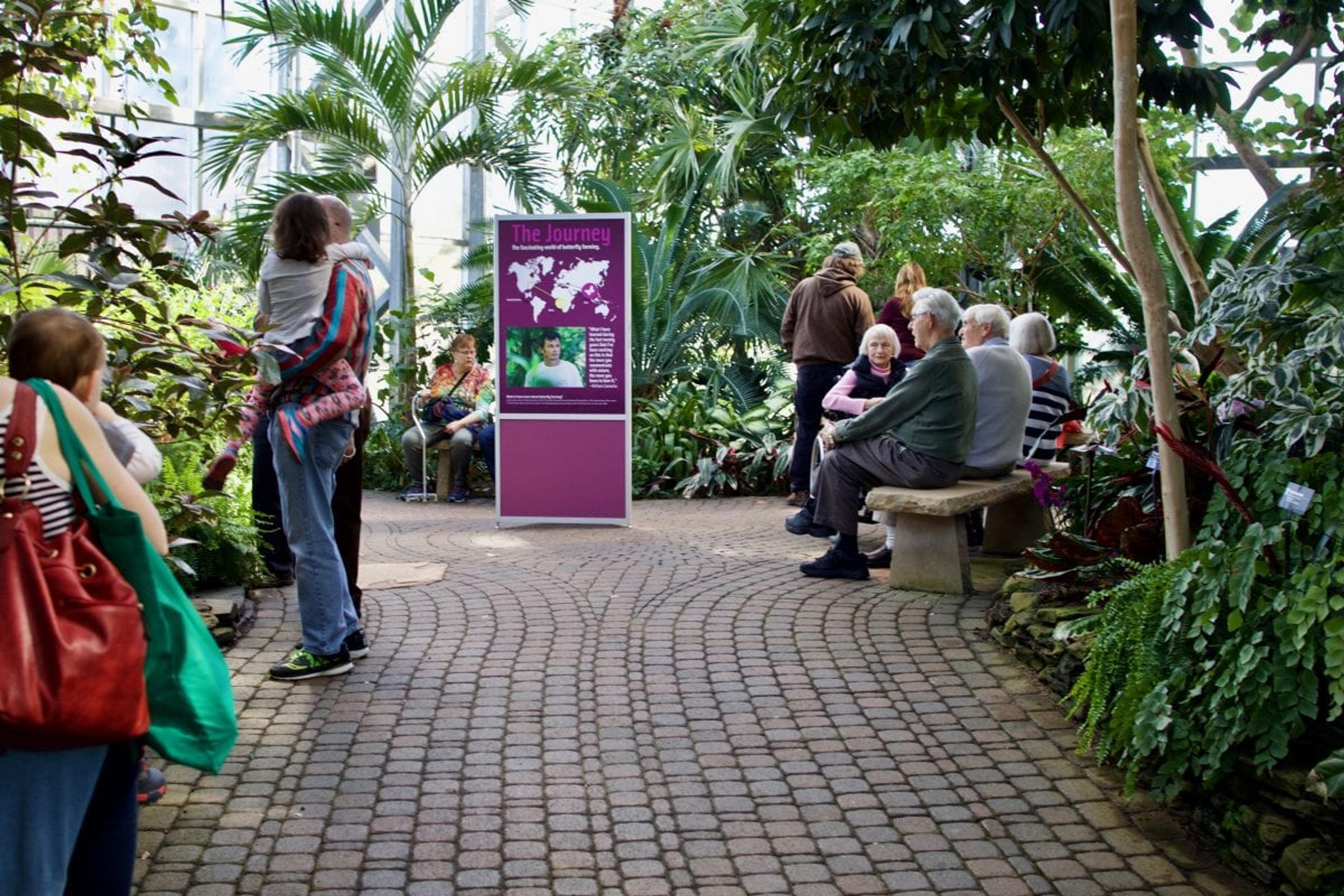Butterflies are Blooming at GR’s Meijer Gardens

Julie Bitely
| 3 min read

“Happiness is a butterfly, which when pursued, is always just beyond your grasp, but which, if you will sit down quietly, may alight upon you.”
– Nathaniel Hawthorne
The emerging butterflies at the annual Fred & Dorothy Fichter Butterflies are Blooming exhibition at Frederik Meijer Gardens & Sculpture Park in Grand Rapids do indeed spread happiness, and yes, occasionally land on lucky visitors.
Thousands of beautiful butterflies fly freely in the gardens’ tropical conservatory every March and April as part of the country’s largest temporary tropical butterfly exhibit. About 1,000 butterflies arrive in chrysalides, or cocoon form from tropical and sub-tropical regions of Asia, Africa, Central and South America every week.
“We keep it full of flying butterflies,” said horticulturist Laurel Gaut.
How do they get here?
Staff work directly with butterfly suppliers, who rely on butterfly farmers in places like Costa Rica, Ecuador, the Philippines and Kenya. Farmers cultivate their butterfly populations by planting their winged charges’ favorite flowering plants and providing the right environment for female butterflies to lay their eggs.
The collected eggs are placed in caterpillar houses. After the caterpillars emerge, they eat voraciously, some growing up to 3,000 times the size they were when hatched. After they form a chrysalis, butterfly farmers and suppliers sort them and pack them in cotton wool or soft paper.
They’re then placed in cardboard boxes and sent on overnight flights to Grand Rapids. The butterflies are still undergoing metamorphosis inside their chrysalides when they arrive.
Making the butterflies feel at home
Staff at Frederik Meijer Gardens carefully place new arrivals in the Butterfly Bungalow located inside the conservatory, where they’re pinned up to allow butterflies the right environment to emerge. Gaut said it’s amazing to see the diversity of shapes and colors present in the butterflies, even as chrysalides.
“The Butterfly Bungalow is a must-see at the exhibition,” Gaut said.
Once they emerge, they’re free to explore everything the conservatory has to offer, including plentiful nectar dishes and trays of over-ripe tropical fruit. During the exhibit, the heat is turned up to 85 degrees and the humidity is boosted to 70 percent in the conservatory to closely mimic the butterflies’ home environment. Most live for two to three weeks as adults.
Flying beauties usher in spring
The butterflies are most active in the mornings, although Gaut said a unique experience can also be had during Tuesday evening hours, when the gardens’ are open until 9 p.m. She said that’s when butterflies often gather by species and hang upside down from tree branches like little jewels. She said visitors won’t see much flying during the evening hours, but will also get to experience the sounds of all the frogs who also call the conservatory home.
The exhibit is an annual rite of passage for many West Michigan schoolchildren and families. Gaut said it’s a great way for the gardens’ to attract visitors in the early springtime, when many of the outdoor exhibits aren’t yet in bloom.
“Once the butterflies are here, that means it’s almost spring, so everyone loves that,” she said.




Have you visited the Butterflies are Blooming exhibit at Frederik Meijer Gardens? What’s your favorite part? Share your experiences in the comments.
If you enjoyed this post, you might also like:
Photo credit: A Healthier Michigan





